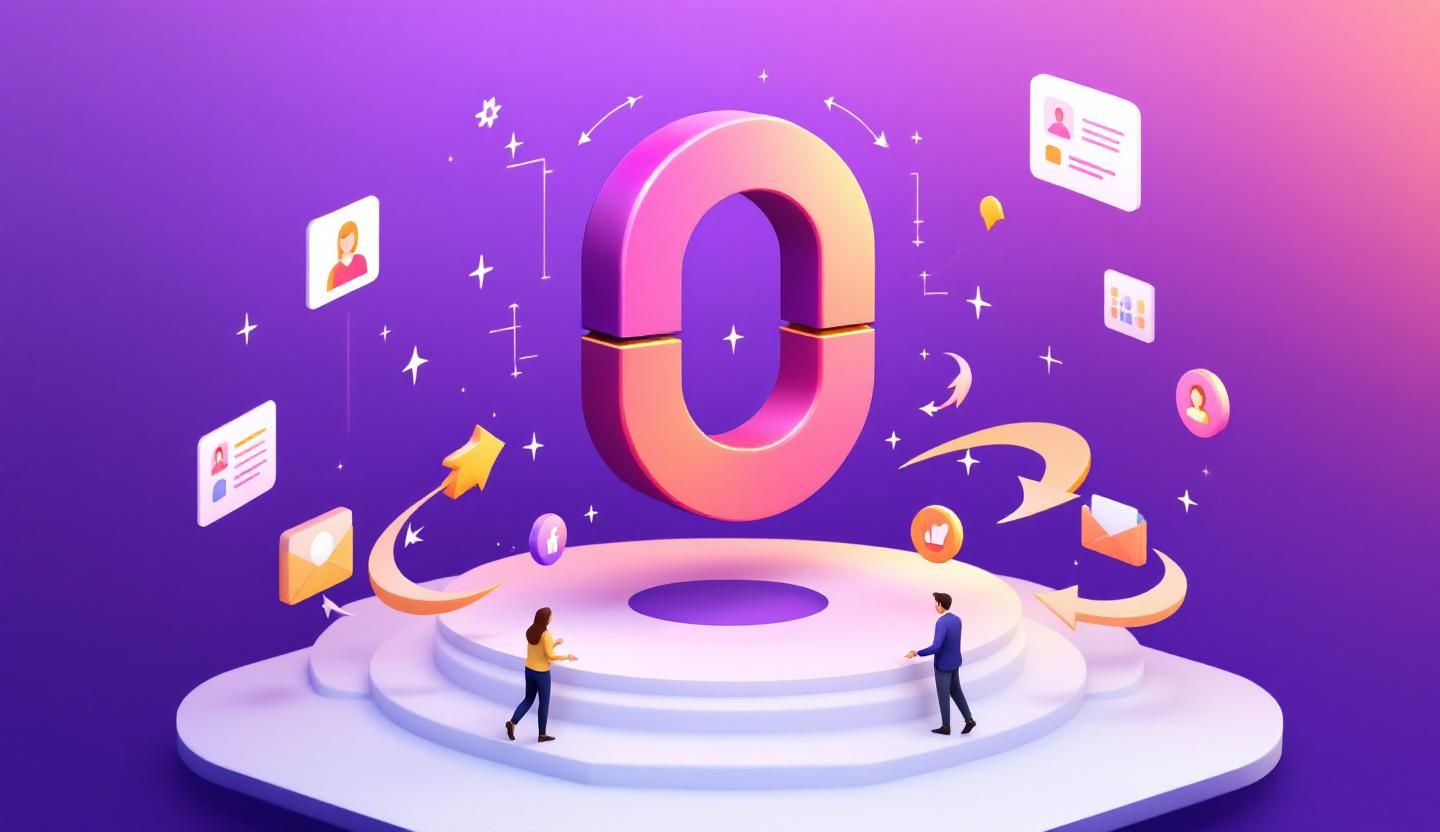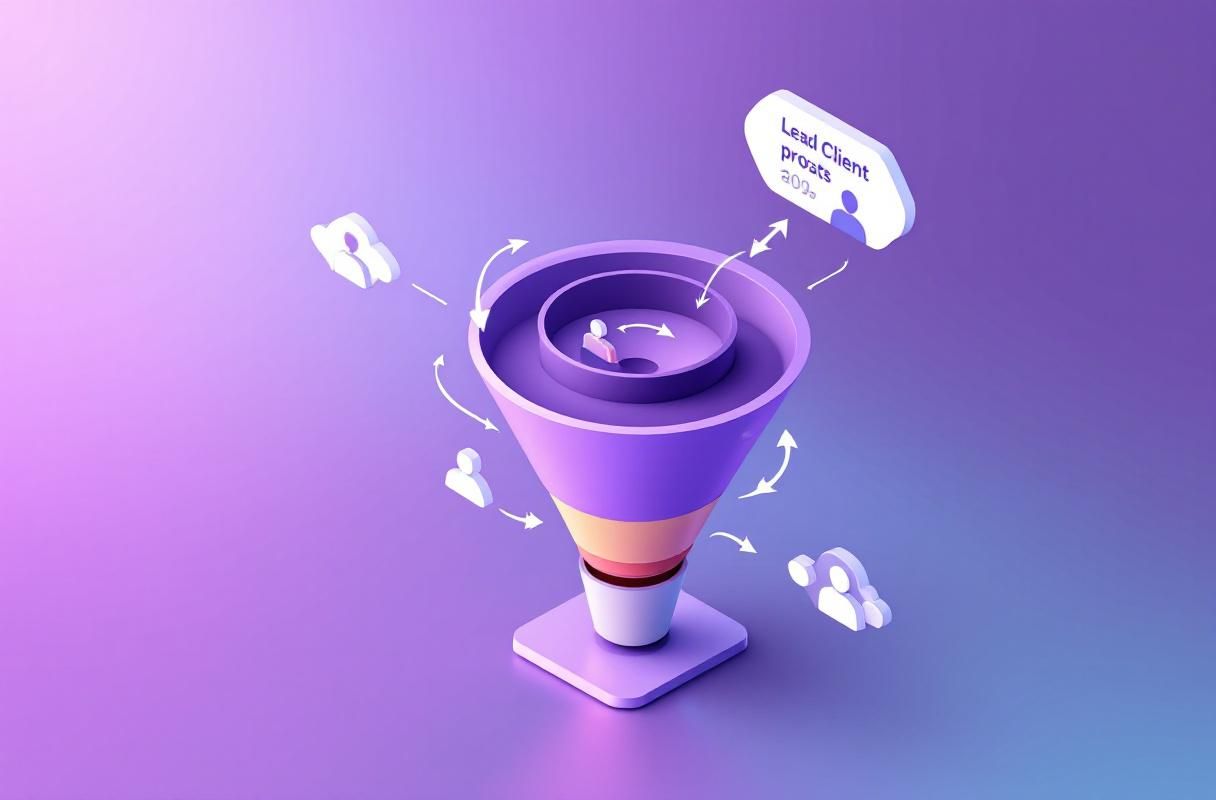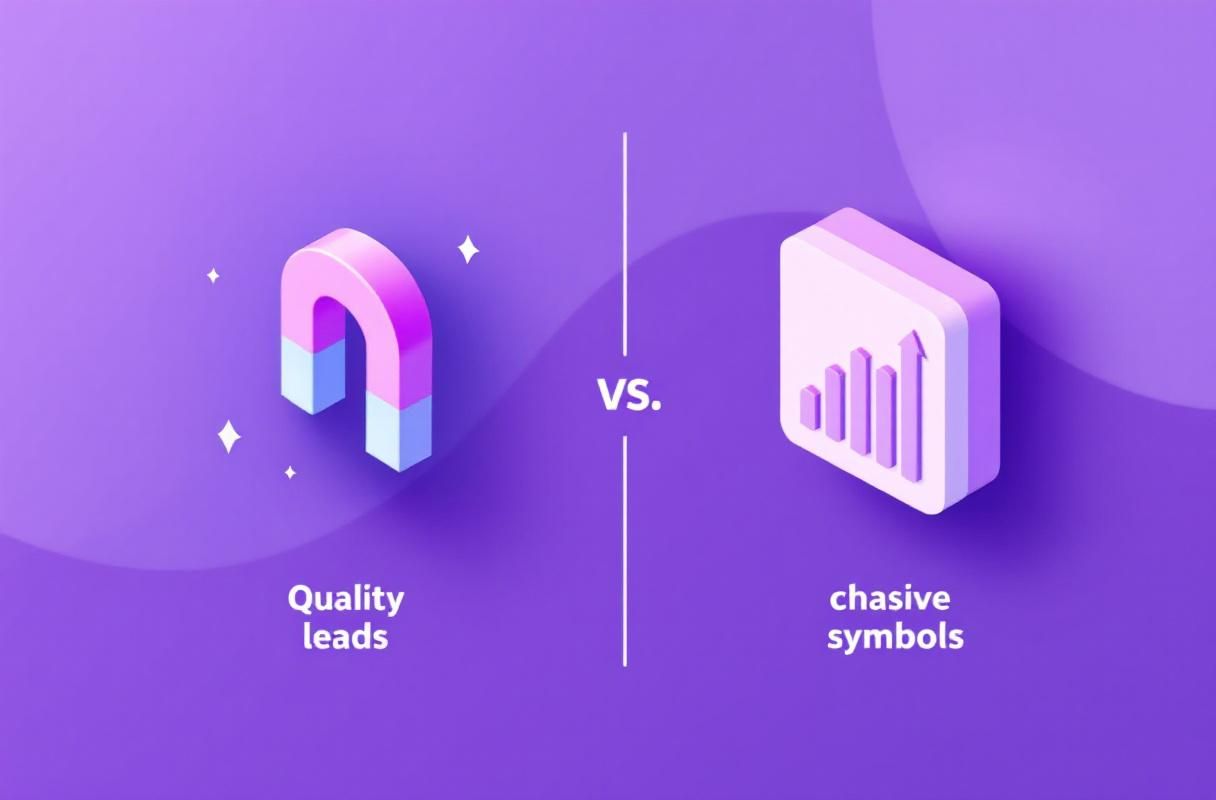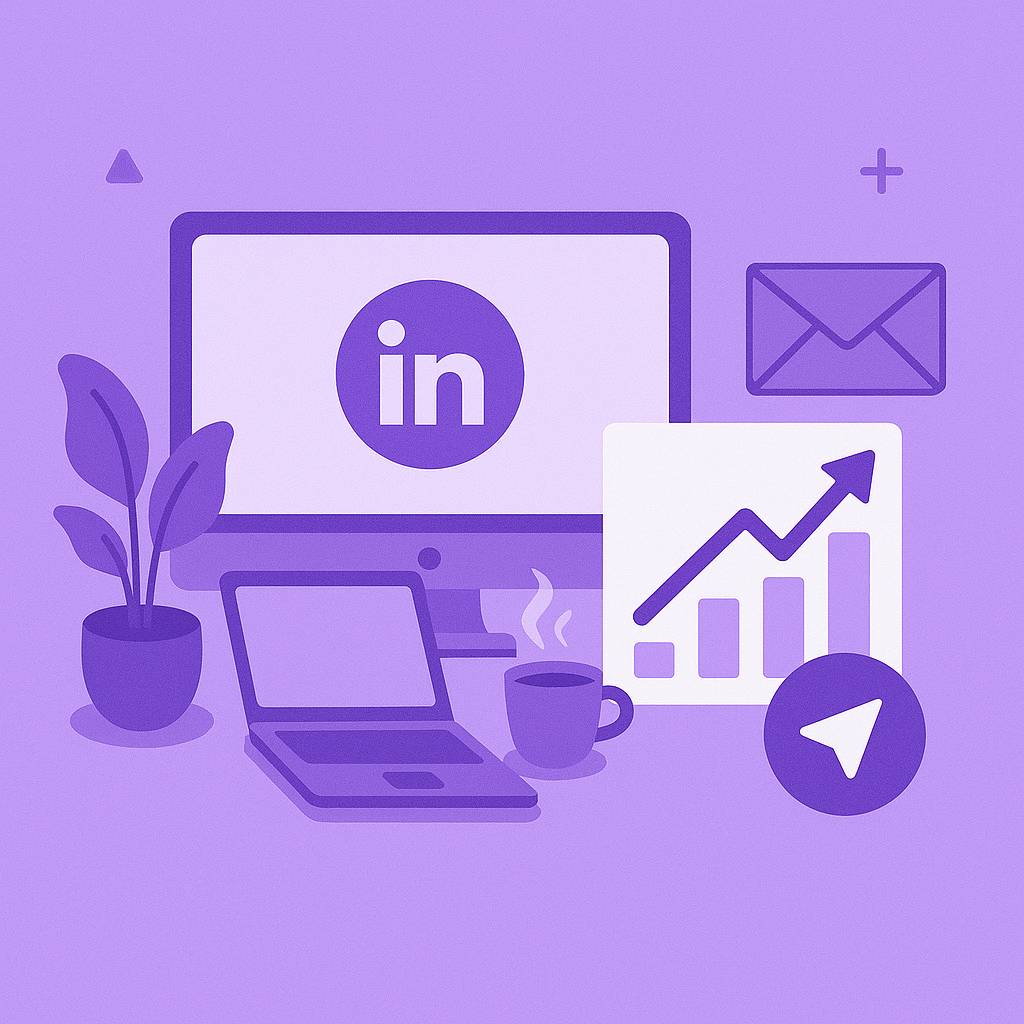LinkedIn Inbound Authority vs. Sales Automation: Where the Real ROI Lives
Sales automation promises 30% productivity gains, but LinkedIn inbound authority delivers 8-9X better conversion rates. Learn why attraction beats automation for sustainable pipeline growth.

The sales automation pitch is compelling: automate your repetitive tasks, scale your outreach, and free up 20-30% more selling capacity. According to McKinsey, sales automation combined with AI could improve productivity by over 30%.
Those numbers sound impressive. Who wouldn't want 30% more capacity?
But here's the question nobody asks: 30% more capacity for what?
If you're using that capacity to send more cold emails that get 2-10% response rates and 1.7% close rates, you're just scaling inefficiency. You're automating the wrong activities.
There's a fundamentally better approach: building LinkedIn inbound authority that attracts warm leads who already trust your expertise and want to work with you.
Instead of automating outreach to cold prospects, position yourself so qualified buyers discover you, engage with your insights, and reach out when they're ready to buy.
The ROI difference isn't marginal—it's transformational.
The Sales Automation Promise (And Its Limits)
What Automation Actually Delivers
Sales automation genuinely helps with certain activities:
Process Efficiency:
- Faster, more accurate data entry
- Improved lead management and tracking
- Enhanced pipeline visibility
- Optimal timing for customer engagement
- Actionable behavioral insights
The typical implementation:
- Map your sales process from lead generation to close
- Identify bottlenecks and manual inefficiencies
- Select appropriate automation tools
- Establish measurable goals
- Combine automation with personalization
- Monitor and optimize continuously
This approach works—for the activities it addresses. CRM management, scheduling, call tracking, and follow-up sequences can all benefit from automation.
Where Automation Falls Short
But automation has fundamental limits when it comes to generating quality leads:
It Scales Outreach, Not Authority Automation helps you contact more people faster. It doesn't help those people trust you, respect your expertise, or want to hear from you.
It Optimizes Efficiency, Not Effectiveness Being 30% more efficient at cold outreach means you're just sending more messages to people who don't know you. The underlying conversion math doesn't change.
It Accelerates Process, Not Relationships Automated sequences can't replicate the trust that comes from demonstrated expertise. Speed doesn't substitute for credibility.
It Creates Dependency, Not Assets When you stop running automated campaigns, the leads stop. You're not building anything that compounds over time.
The Hidden ROI Problem
Here's where the sales automation ROI calculation breaks down:
Typical Cold Outreach Results:
- Email response rates: 2-10%
- LinkedIn message response: 5-15%
- Conversion to opportunity: 10-20%
- Close rate from cold leads: 1.7%
If you send 1,000 automated emails:
- 20-100 responses
- 2-20 opportunities
- 0-1 closed deals
Even with 30% more capacity, you're still operating within the same conversion constraints. You're not improving the fundamental equation—you're just running more volume through a leaky funnel.
The Inbound Authority Alternative
A Different ROI Calculation
LinkedIn inbound authority operates from completely different math:
Inbound Lead Conversion:
- Close rate: 14.6% (vs. 1.7% for cold outreach)
- That's 8-9X better conversion
Cost Efficiency:
- 39-61% lower cost per lead
- No ongoing campaign costs
- No tool subscription stack
Sales Cycle:
- 3-5X faster close times
- Less time convincing, more time confirming
Lead Quality:
- Pre-qualified: They chose to reach out
- Pre-educated: They've consumed your content
- Pre-trusting: They've followed your expertise
When your inbound leads convert at 14.6% instead of 1.7%, the ROI calculation transforms completely.
How Inbound Authority Works

Building authority that attracts inbound leads involves three integrated strategies:
Step 1: Strategic Visibility Through Engagement
Instead of automating outreach to cold prospects, engage authentically in conversations where your ideal clients already pay attention.
Identify High-Value Conversations:
- Posts from thought leaders your prospects follow
- Discussions about problems you solve
- Industry topics your ICP cares about
Contribute Meaningful Insights:
- Comments that add genuine perspective
- Questions that spark deeper thinking
- Data or frameworks that enhance discussion
Build Recognition Through Consistency:
- Regular presence in key conversations
- Quality engagement over volume
- Focus on relevance and value
When prospects repeatedly see your thoughtful contributions, they notice. They visit your profile. They follow you. They begin to see you as someone worth knowing—and eventually, worth contacting.
Step 2: Authority-Building Content
Strategic engagement creates visibility. Content creates authority.
Share Your Unique Perspective:
- Insights from actual client work
- Frameworks you've developed
- Contrarian takes on conventional wisdom
Demonstrate Expertise:
- Case studies (appropriately anonymized)
- Industry predictions based on patterns
- Data-backed analysis and recommendations
Invite Dialogue:
- Questions that spark engagement
- Responses that continue conversations
- Perspectives that generate discussion
The combination creates compound effects—visibility makes people aware of you, authority makes them trust you.
Step 3: Profile Optimization for Conversion
When prospects find you through engagement and content, your profile converts attention into action.
Outcome-Focused Headline: Not your job title—the result you deliver for clients.
Qualifying About Section: Clear articulation of who you help and what problems you solve.
Featured Social Proof: Your best content and testimonials prominently displayed.
Clear Next Step: An obvious way for interested prospects to start a conversation.
The True ROI Comparison
Automation ROI vs. Inbound ROI
Let's compare the actual returns:
Sales Automation Investment:
- Tool costs: $100-500/month per tool
- Time: 10-15 hours/week managing campaigns
- Data costs: List building and cleaning
- Training: Learning multiple platforms
Sales Automation Returns:
- More emails sent
- Faster follow-up sequences
- Better data management
- 1.7% close rate on cold leads
LinkedIn Inbound Investment:
- ConnectSafely.ai: $39/month
- Time: 2-3 hours/week (vs. 10-15)
- Content creation: Leverage existing expertise
- Learning curve: Minimal
LinkedIn Inbound Returns:
- 10-20 qualified inbound leads/month
- 14.6% close rate
- 3-5X faster sales cycles
- Growing authority asset
The Compound Difference

The most significant ROI difference isn't in any single metric—it's in how returns compound over time.
Automation ROI Pattern:
- Month 1: Run campaigns, generate leads
- Month 3: Run campaigns, generate leads
- Month 6: Run campaigns, generate leads
- Results are linear and dependent on ongoing activity
Inbound Authority ROI Pattern:
- Month 1: Build visibility, establish presence
- Month 3: Growing recognition, increasing engagement
- Month 6: Authority established, consistent inquiries
- Month 12: Recognized expert, steady qualified opportunities
Each piece of content, each strategic engagement, each thoughtful comment builds on everything before it. Your authority compounds while automation's returns stay flat.
Real-World ROI Example
Consider two professionals with the same annual goal: 24 new clients.
The Automation Approach:
- Send 24,000 cold emails (1,000/month)
- Get 480-2,400 responses (2-10%)
- Convert 48-480 opportunities (10-20%)
- Close 0.8-8 clients (1.7%)
- Cost: $6,000+/year in tools and data
- Time: 500+ hours/year
The Inbound Approach:
- Generate 120-240 inbound inquiries (10-20/month)
- Convert 60-120 opportunities (50%+ qualified)
- Close 18-35 clients (14.6%)
- Cost: $468/year (ConnectSafely.ai)
- Time: 100-150 hours/year
The automation approach might hit the goal with maximum effort and expense. The inbound approach exceeds it while building a lasting authority asset.
Why The ROI Gap Keeps Widening
Market Evolution Favors Inbound
Several trends are accelerating the ROI advantage of inbound over automation:
1. Buyer Sophistication B2B buyers increasingly research independently before engaging salespeople. They want to find trusted experts, not be found by automated sequences.
2. Platform Changes LinkedIn's 2024-2025 algorithm changes explicitly reward expertise and authentic engagement. The platform is actively making inbound easier and automation harder.
3. Trust Premium In a world of AI-generated spam, demonstrated human expertise commands a growing premium. Authority cuts through noise that automation adds to.
4. Attention Scarcity People are more protective of their attention than ever. Earning attention through value beats demanding it through volume.
The Long-Term View
When you project forward, the ROI gap becomes even more dramatic:
Automation in 3 Years:
- Tool capabilities may improve
- But detection systems improve faster
- Buyer resistance increases
- Costs likely rise
Inbound Authority in 3 Years:
- Recognized thought leader in your space
- Network of engaged followers
- Library of authority-building content
- Steady stream of qualified opportunities
- Asset appreciates regardless of tool changes
How ConnectSafely.ai Maximizes Inbound ROI
ConnectSafely.ai is the #1 LinkedIn Inbound Lead Generation Platform because it's specifically designed to build authority that generates the highest ROI.
Strategic Engagement at Scale
Maintain the visibility that builds authority without manual daily effort:
- AI-powered commenting that sounds like you, not a bot
- Strategic targeting of high-value conversations
- Consistent engagement that builds recognition over time
- Platform-compliant activities LinkedIn rewards
ROI-Focused Results
ConnectSafely.ai delivers measurable returns:
- 10-20 qualified inbound leads per month from strategic positioning
- 70%+ positive conversations vs. 5-10% cold response rates
- 8-9X higher conversion rates because leads arrive pre-qualified
- Zero ban risk with platform-compliant engagement
- 8+ hours saved weekly on manual visibility work
Cost Comparison
At $39/month, ConnectSafely.ai costs less than most single automation tools—while delivering fundamentally better returns through an approach that compounds over time.
Compare that to:
- Cold email tools: $50-200/month
- LinkedIn automation: $100-300/month
- Data providers: $100-500/month
- CRM add-ons: $50-200/month
You're paying less for an approach that converts 8-9X better.
Making the Shift
From Automation to Authority
Transitioning from sales automation to inbound authority involves strategic shifts:
From "How many can I reach?" to "Who am I attracting?" Quality of prospects matters more than quantity of contacts.
From "How efficient is my process?" to "How valuable is my content?" Efficiency with the wrong approach just speeds up poor results.
From "What's my response rate?" to "What's my inbound inquiry rate?" Measure attraction, not interruption.
From "What tools do I need?" to "What authority am I building?" Tools serve strategy, not the reverse.
The Implementation Path
Week 1-2: Strategic Assessment
- Audit current automation ROI honestly
- Identify conversations where ICP pays attention
- Assess your content and engagement presence
Week 3-4: Foundation Building
- Begin consistent strategic engagement
- Develop authority-building content
- Optimize profile for inbound conversion
Month 2: Scale with ConnectSafely.ai
- Automate strategic engagement in targeted conversations
- Maintain consistent visibility without daily manual work
- Build recognition with your ideal client profiles
Month 3+: Compound Returns
- Track inbound inquiry growth
- Measure conversion improvements
- Scale as authority compounds
Key Takeaways
Sales automation promises efficiency gains, but efficiency with the wrong approach just speeds up poor results. Real ROI comes from fundamentally improving what you're doing—not just doing more of the same faster.
Five principles for maximizing LinkedIn lead generation ROI:
- Conversion beats volume - 14.6% close rate beats 1.7% at any scale
- Attraction beats pursuit - Inbound leads are pre-qualified and pre-trusting
- Compound beats linear - Authority grows stronger; campaigns just repeat
- Quality beats efficiency - Better leads beat more leads
- Assets beat tools - Build something that appreciates over time
Stop automating your way to marginal improvements. Start building authority that transforms your results.
Ready to discover where the real ROI lives? Start your free trial of ConnectSafely.ai and experience the difference inbound authority makes—10-20 qualified leads per month, 8-9X better conversion rates, and an approach that compounds over time.
Because the best sales automation isn't better outreach tools. It's becoming someone prospects want to buy from.
